Apple iPhone 15 models compared: 15 vs Plus vs Pro vs Pro Max
Everything you need to know about the entire iPhone 15 family - we compare all four phones
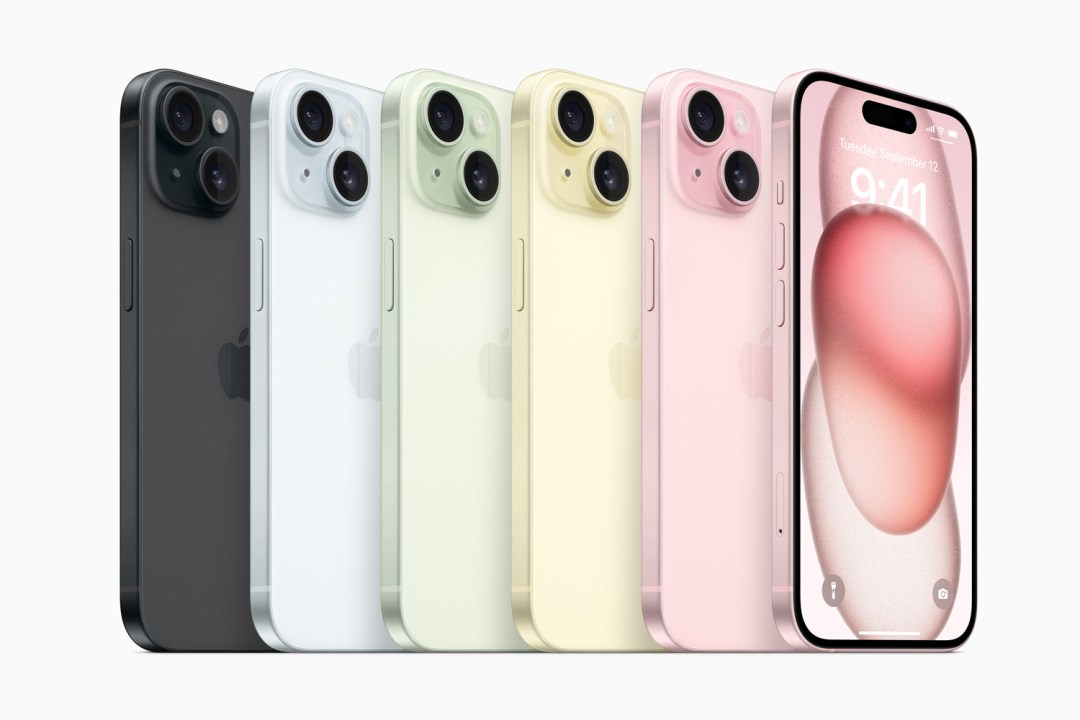
Every year, Apple releases its latest iPhone smartphone series into the world. And every time there’s some confusion this time around about what exactly each model brings to the party. So let’s look at the differences between the iPhone 15 range which consists of iPhone 15, 15 Plus, 15 Pro and 15 Pro Max.
In general, the Pro model has higher specs than the base model, and the Plus and Max are simply larger versions of the iPhone and iPhone Pro. However, some features are exclusive to the Pro line, so it’s important to know exactly what you’re getting before you make your choice.
What are the iPhone 15 models?

Just like the iPhone 14 before it, the iPhone 15 comes in four separate models. The base model, known simply as the iPhone 15, is joined by the more powerful iPhone 15 Pro. These are then further augmented by larger models, the iPhone 15 Plus and iPhone 15 Pro Max. It’s a little convoluted, but means there’s an iPhone 15 to suit the needs of most prospective buyers.
We’re paying attention here to the differences between the various models in the iPhone 15 family. We’ll try to address the question of whether it’s time to upgrade from an iPhone 13 or 14.
Once again, there’s no iPhone 15 Mini. So the base model is the smallest and cheapest you’re going to get, and every other version is a step up from there.
Apple iPhone 15 pricing
| Model | 128GB Price | 256GB Price | 512GB Price | 1TB Price |
| iPhone 15 | $799/£799 | $899/£899 | $1,099/£1,099 | N/A |
| iPhone 15 Plus | $899/£899 | $999/£999 | $1,199/£1,199 | N/A |
| iPhone 15 Pro | $999/£999 | $1,099/£1,099 | $1,299/£1,299 | $1,499/£1,499 |
| iPhone 15 Pro Max | N/A | $1,199/£1,199 | $1,399/£1,399 | $1,599/£1,599 |
Apple iPhone 15 vs Pro design
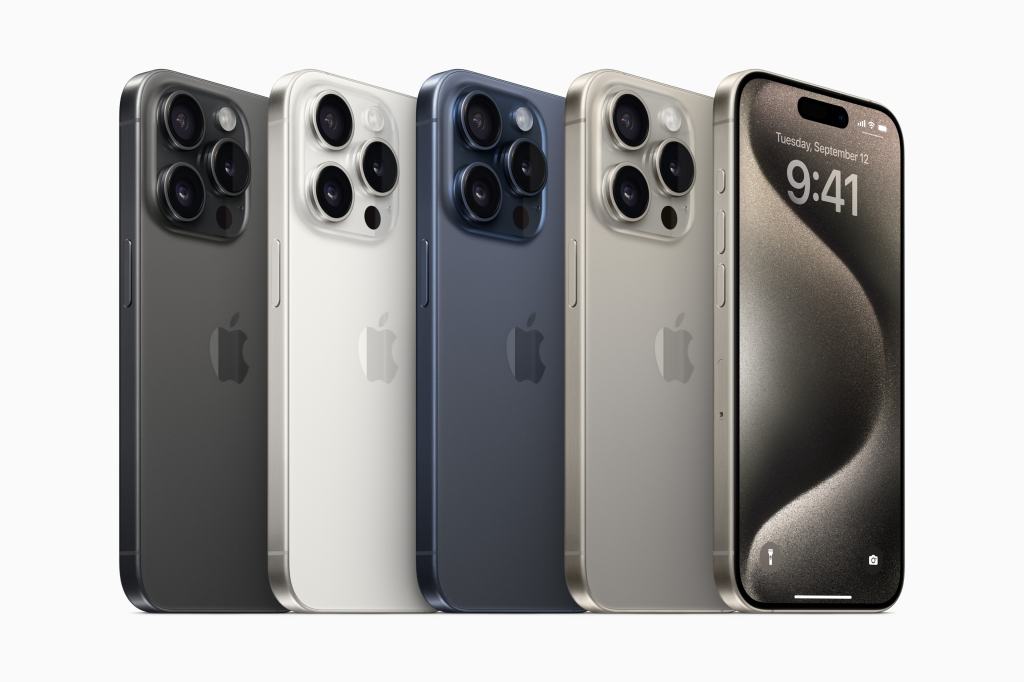
The iPhone 15 and its Pro counterpart are pretty much the same from a design standpoint. But there are a couple of notable differences that should allow you to tell them apart more easily. The first is the distinctive triple-camera cluster on the Pro models. The basic iPhone 15 and the Plus have to make do with only two. There’s also a new multifunctional ‘Action’ button on the Pro models. This replaces the mute switch, but this can be hard to spot.
One thing you won’t be able to use to tell the iPhone 15 models apart is the Dynamic Island. This strangely named piece of screen furniture has now been rolled out across the range. It replaces the Notch that’s been at the top of iPhone screens since the X.
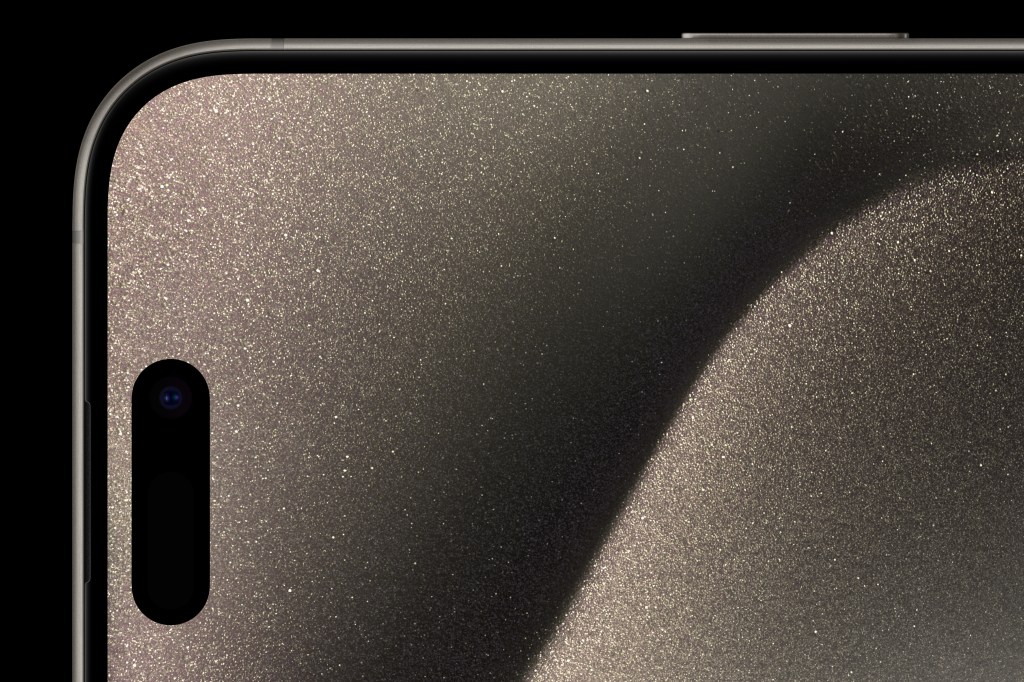
There are some interesting colour options available for the iPhone 15. These range from the standard black through coral pink, pale blue, green and yellow – there’s no white option. They’re all rather muted. We have to wait for a special edition before we get a really bright phone. The colours available for the Pro are even more businesslike, a mix of grey, silver and a metallic blue.
USB-C and eSIM
The big change in the design of the iPhone 15 family is the change from a Lightning port to USB-C. There’s not much difference between the two. They’re both rotationally symmetrical so it doesn’t matter which way up you insert the cable. And they both carry out the same functions, charging the phone and transferring data to it if needed. But it does mean all your old Lightning cables are now obsolete if you upgrade to this phone or any future iPhone. Luckily, as USB-C is rapidly becoming the charging cable of choice for just about every gadget that relies on a battery, the chances are you’ll already have some lying around.
The external SIM slot is no more on the iPhone 15 if you buy it in the US. Other countries still have a physical SIM slot. It’s a good way to tell the newer models apart from the older iPhones. This means the new handset uses only eSIM. This has led to a subtle design change that sees the area under the volume buttons at the side of the phone smoothed over, where the tray release hole would once have been. This will help with the IP rating. It stays at IP68 just like the iPhone 14, but it’s one less way for water to get in.
Apple iPhone 15 displays
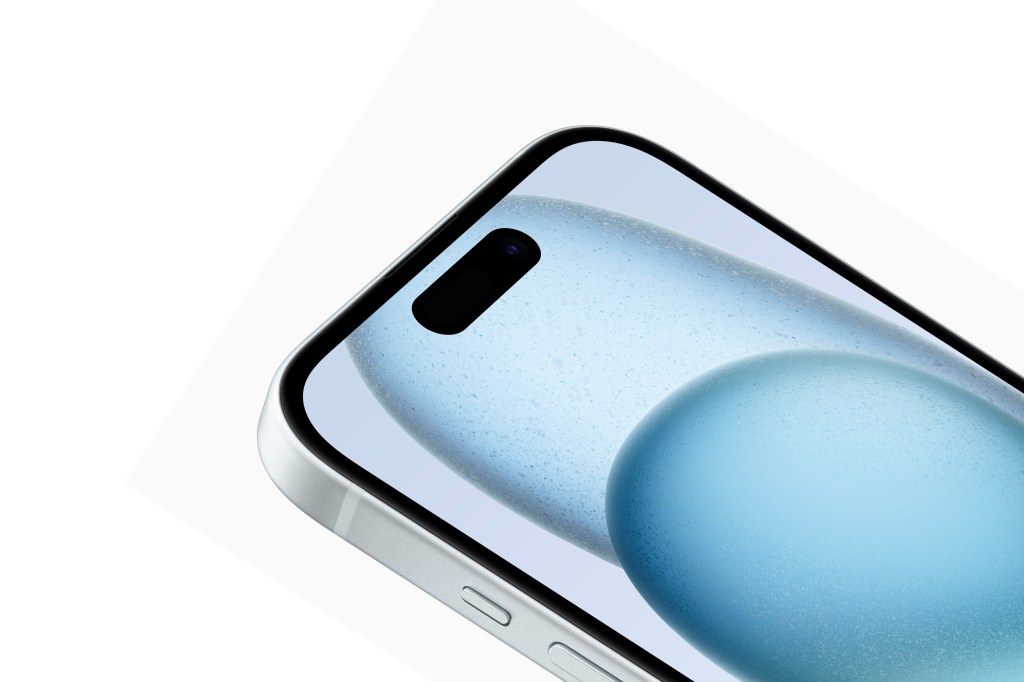
The first OLED iPhone was the X in 2017. Apple has stuck with the technology ever since, with the iPhone 12 the first to roll it out across the main range. The 2022 SE model is the only remaining handset to sport an IPS LCD screen. This holds true for the iPhone 15, which doesn’t break with the precedent set with previous handsets. It offers a choice of screen sizes with the same pixel density on each.
The basic iPhone 15 has a 6.1in OLED screen with a resolution of 2556 x 1179 pixels, for a density of 460ppi, and a refresh rate of 60Hz. That’s fine, but it would have been nice to see Apple move to a higher refresh rate for this phone. We’ve seen it so many times in the world of Android handsets.
The iPhone 15 Plus has a larger screen at 6.7 inches, and to keep the same density it requires a resolution of 2796 x 1290 pixels. Again, the refresh rate is 60Hz. That’s fast enough for most things but means these phones miss out on the extreme levels of smoothness offered elsewhere.
The refresh rate rises for the Pro models. The iPhone 15 Pro and Pro Max keep the same resolution as the non-Pro models. But they feature adaptive refresh rates up to 120Hz thanks to Apple’s ProMotion tech.
All the iPhone 15 screens support HDR, have a peak brightness of 1,000 nits. This can be boosted in HDR mode or when the phone detects it’s outdoors. They also have a wide colour gamut that hits the P3 standard. Colours will be consistent between it and calibrated displays. This can be useful for video editors and graphic designers. Plus there’s a fingerprint-resistant coating.
Apple iPhone 15 family cameras
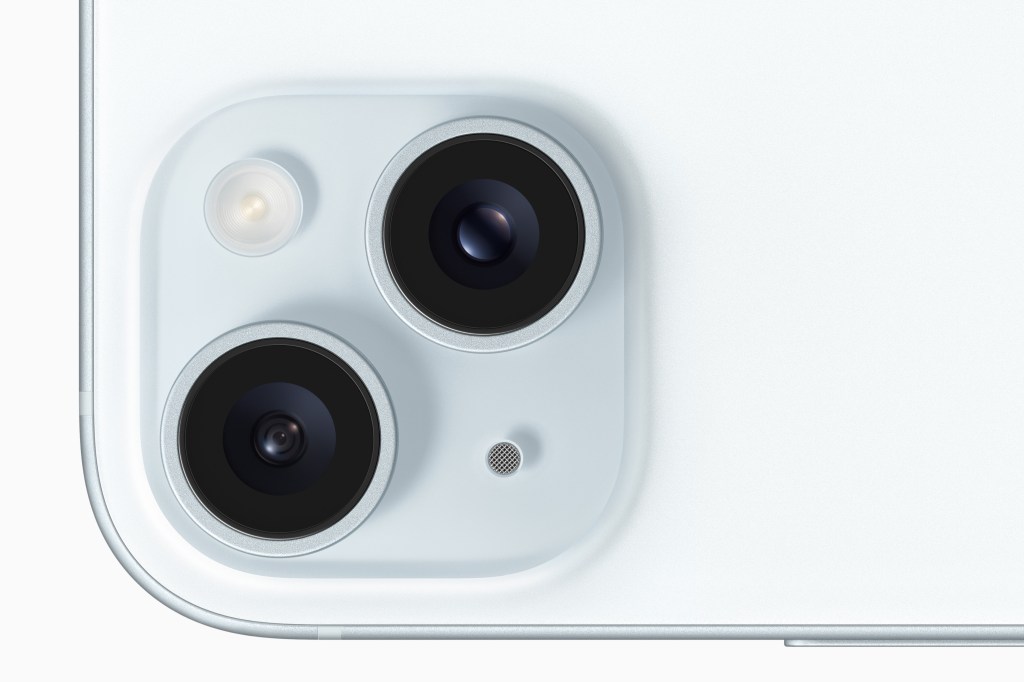
The iPhone 15 cameras get an upgrade in the form of a new 48MP Sony sensor that matches that on the iPhone 14 Pro. Previous iterations of the iPhone have used a 12MP sensor, so it represents quite a jump in resolution.
The range is still split between a dual-camera setup for the iPhone 15 and iPhone 15 Plus, and a triple-lens cluster on the back of the Pro models. The basic models offer a choice between 48MP wide-angle and 13MP ultrawide fields of view, while the Pro adds a fixed 12.7MP telephoto and the Pro Max model offers a 12.7MP zoom.
This variable lens uses a clever periscope combination of lenses and mirrors. That keeps the moving parts vertical inside the phone casing, keeping the iPhone as slim as we expect it to be. It offers a 5x telephoto zoom. This outdoes the digital zooms and fixed focal lengths we’ve been used to in Apple’s phones in terms of both versatility and quality. There’s a 63MP panorama mode on the iPhone 15, along with 4K video at up to 60FPS. The TrueDepth camera on the front of the phone that’s responsible for face recognition has a 12MP sensor. It can do all the same tricks as the rear cameras, including portrait mode, time-lapse, slow-mo, and HDR video recording.
Apple iPhone 15 family performance and battery
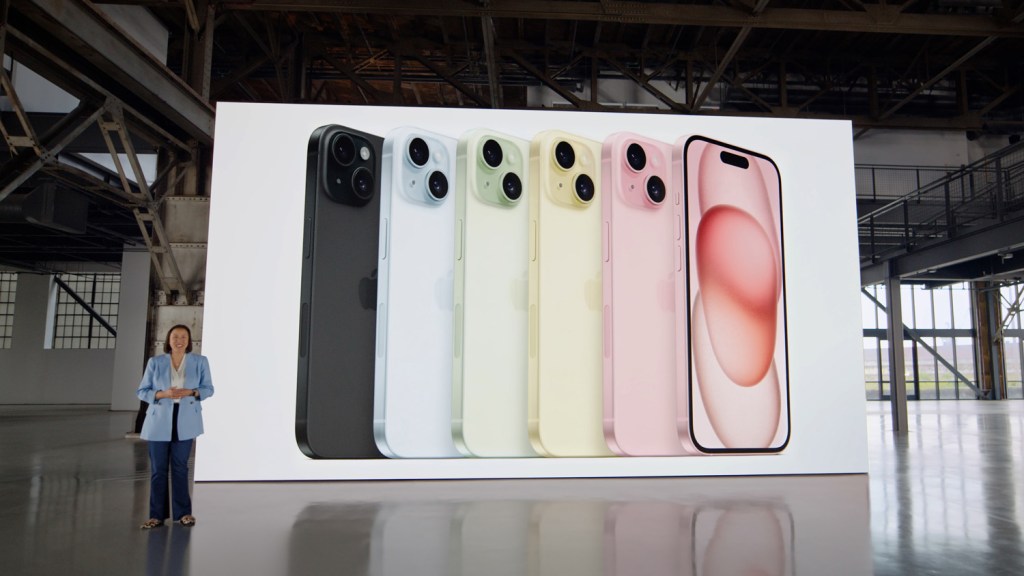
Every year, the processor numbers in iPhones go up by one, and their performance increases in step with this. The iPhone 15 and Plus get an A16 Bionic chip similar to that from 2022’s iPhone 14 Pro. The iPhone 15 Pro models get a new A17 Pro processor that’s more powerful and efficient, thanks to a new 3nm manufacturing process.
There’s a similar difference in the amount of RAM, or memory, the phones are equipped with. The iPhone 15 and Plus get 6GB just like the iPhone 14. This is an OK amount for a phone but is outclassed by the latest Android handsets that are now coming with 8GB or even 12GB. The two iPhone 15 Pro models get 8GB. This should offer a small performance boost, especially if you’re in the habit of switching between apps frequently.
The A17 Pro chip in the iPhone 15 Pro should improve battery life thanks to its smaller manufacturing process. As should the variable refresh rate on the OLED screen, which can drop to 1fps when the screen is idle. Otherwise, the battery life in the iPhone 15 is about the same as for the iPhone 14. The base model will manage up to 20 hours of use, which increases in the larger models thanks to their greater capacity.
Apple iPhone 15 family software
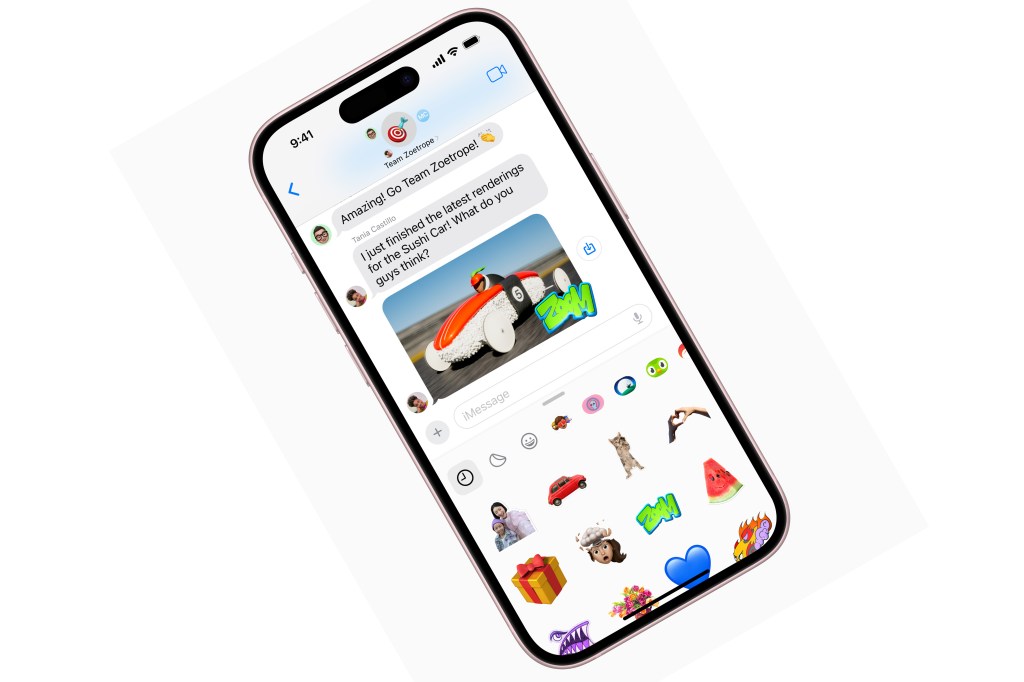
The iPhone 15 launched with iOS 17 on board, Apple’s latest version of its mobile operating system. It’s been in beta testing since June, so should launch with many of its bugs already fixed. The OS is the same for every model in the iPhone 15 family. As usual the iPads get a slightly different version in the form of iPadOS.
iOS 17 doesn’t reinvent Apple’s software much. There are some changes to the way contacts are handled in the Phone app, a Live Voicemail feature that transcribes voicemail messages to text as they’re being left. So you no longer have to dread calling the mailbox and listening to the messages. FaceTime now supports leaving messages in the form of short video clips if you call someone who’s unable to answer. Plus you can easily swap contact details with fellow iPhone users by simply bringing the handsets close together to use the new NameDrop function.
Other improvements include being able to use your iPhone camera in conjunction with your Apple TV box to bring FaceTime video calls to your TV screen. You’re also able to share your location in Messages more easily. Plus there’s improved autocorrect using a machine learning model to predict what you’re going to type before you even know it, up to the level of entire sentences and interactive widgets on the home screen.
Apple iPhone 15 family: which should you get?
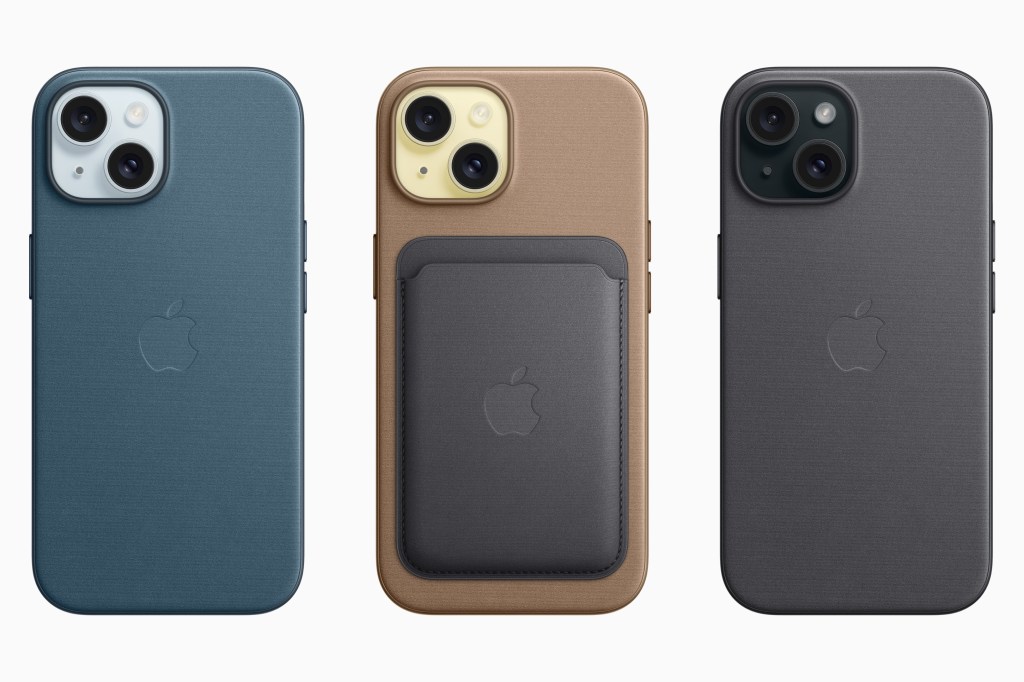
Which of the iPhone 15 family you should buy depends on many things. The foremost of these is budget: check out the table of prices near the top of this article to see how much each model will set you back. If you’re happy to spend more, the iPhone 15 Pro phones are higher-spec than those below them in the range, and the extra telephoto camera is a really nice thing to have, along with the extra performance from the new A17 Pro processor.
Another important consideration is size. The Plus and Pro Max models increase the screen size by a noticable amount, but are also larger in the hand as a result, requiring more of a stretch from your thumb to reach the top of the screen. While the larger models are nicer for streaming video and viewing photos, the standard-sized models aren’t too far behind, and have the advantage of being lighter and taking up less space in a pocket or bag. The iPhone 15 models are currently the best that Apple has to offer, and any of them will serve you very well indeed for many times to come.